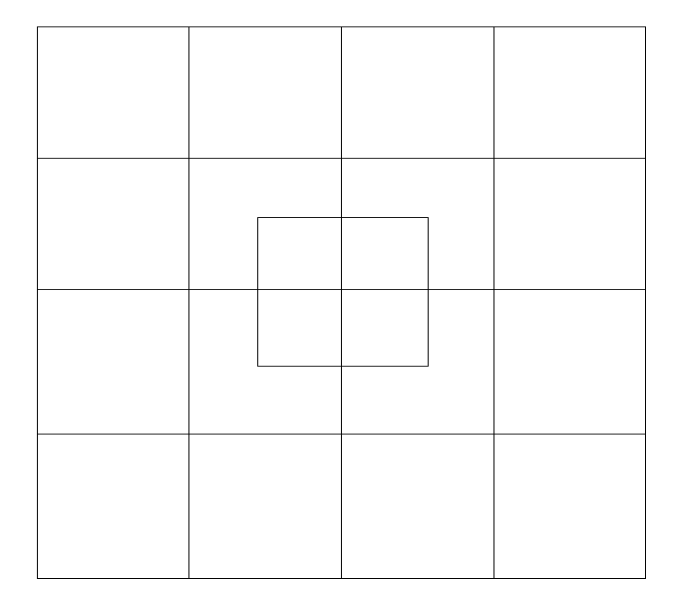THE GAME OF SQUARES

- Ask the participants how many squares they see in the picture.
- By hand lift, participants speak out the numbers: give them a couple of minutes of time and watch what happens.
- The comment “Bingo! However, you are all right as you correctly answered the question “How many squares do you see?”
- Invite the participants who have said the most average numbers to indicate the squares that they have identified. Then invite the participants who have seen more squares to do the same (up to the number of 35 squares – if none of them has done it, you can show the 35 squares to the participants)
DEBRIEFING
When the 35 squares have been identified, the facilitator draws the conclusions.
Describe what happened: participants reported what they saw, were curious about what the others were reporting, tried to see what they were seeing, once they understood the process they applied it to find out new squares with similar characteristics, they helped one another, they looked for a common solution
The process, expressed here with these small geometrical figures, shows that
- we can learn from anyone on any occasion: from those who we think share our own knowledge/preparation/approach to those who come from a different country or background
- We must make an effort to see beyond appearances as what we see is often much more complex than what we think
This game is a metaphor for what happens in the intercultural learning process. The facilitator underlines the role of
- Attitudes (mostly related to an individual level: curiosity, discovery, openness, readiness to participate, respect, flexibility…)
- Knowledge (mostly related to an individual level: numbers, squares, ability to recognize & to count)
- Skills (related to a individual but in connection with others: self confidence, disposition to observe/to listen to other points of view, to suspend judgment, to analyze, to go beyond the surface, to be aware of different positions and their reasons , to confront/help/tutor one another, problem solving ….)
- Competence (related to both individual and social levels: confidence that there is not only one point of view, awareness of the process of learning and discovery, capacity to use the process in other similar situations)
